Features of growing mulberries in the middle lane, care rules
When growing mulberries in the middle lane, the process has its own characteristics, however, with minimal care, you can regularly get a harvest of tasty and healthy berries. Many varieties of unpretentious plants have perfectly adapted to the harsh climate.
Appearance and varieties
Mulberry (mulberry) is usually a dioecious tree or bush with a height of 1 to 15 m. There are both female and male plants. The monoecious mulberry is less common. The fruit is a fleshy polystyrene, ranging in size from 1 to 5 cm. There are varieties with berries of white, dark purple and pink flowers.
Depending on the individual characteristics of the plant, fruiting can last for 2-3 weeks or more than a month. It occurs only on female specimens of the mulberry tree.
A healthy mulberry can grow and bear fruit from 150 to 300 years, depending on the type and development conditions.
Mulberry is actively cultivated in the southern regions; about 17 species of this plant are known. Over time, the distribution area of the mulberry tree moved far north. Some of its varieties are grown in many areas of the middle lane, for example, in the Moscow region, in the Urals and in Siberia. This is possible due to the plant's ability to quickly restore vegetative mass.
In the northern regions, varieties of white mulberry are grown (they take into account not the color of the berries, but the shades of the plant bark). Plants are planted with a light yellowish or light beige shade of the trunk and branches. At the same time, the fruits on the plant can be both dark and light, and the frost resistance of such a mulberry tree is higher.
- "White Honey" is a high-yielding variety, resistant to low temperatures, with appetizing fruits, which is actively grown in the Moscow region. Not demanding on the soil, however, the berries themselves have a very short shelf life - about 6 hours.
- "Black Baroness" is a tree with large berries (4 cm). The variety is high-yielding and frost-resistant.
- "Vladimirskaya" is a red-fruited variety with dark purple fruits. Does not need pollinators, lends itself well to different types of formation. A distinctive feature of the variety is its high frost resistance. Suitable for growing in Siberia.
Reproduction
There are several main ways to get new mulberries. Each of them has both advantages and disadvantages.
- Seeds.
This method is not difficult to use, but it is time consuming. Usually it is used by breeders to obtain a stock of varietal seedlings. The resulting plants do not always retain the properties of the parent tree.
After collecting the fruits, seeds are isolated from them - for this, the berries are dried and ground through cheesecloth or a sieve. Store in a dry place until work is carried out, after two years they are sown in open ground. Usually stratification is carried out two months before sowing. Seed material in April is placed in a fertile soil mixture to a depth of about 2 cm. At a temperature of 20 to 25 degrees, the seeds germinate in about four weeks. They are regularly watered, loosened up the soil, removed weeds in the area with plantings. For the winter, be sure to mulch.
Specimens grown from seeds of local plants adapt better to the conditions of a particular region.
From seedlings, female and male specimens of the mulberry tree grow. Before flowering, it is impossible to determine the sex of the plant. For the first time, mulberries grown from seeds begin to bear fruit about the 4th year after planting. Only female specimens are left, as they can form fruits without the presence of male plants.
- Cuttings.
Use green twigs with 4-6 leaves. Cuttings are carried out at the beginning of summer, placing blanks under a film in a greenhouse. They take root after about a month and a half. For the winter, young plants are sheltered, and the next spring they are transplanted to a permanent growing place. It is more difficult to root semi-lignified cuttings, they are harvested in the middle of summer.
- Root processes and layering.
For cultivation, in early spring, the lower branch is bent to the soil. It is fixed and lightly sprinkled with earth. At the fold, the bark is slightly peeled off to stimulate root formation. By the fall, the root system is formed.
- By vaccination.
It is carried out in early spring, before the sap flow begins. White mulberry with high frost resistance is usually used as a stock. Several varieties of mulberry with different biological properties can be grafted onto one tree. It is easy to carry out a simple copulation when the same indirect cuts are made between the buds on the scion and rootstock. They are connected, firmly held together and do not allow displacement.
Mulberry tolerates transplantation well, two-year-old trees take root especially easily.
How to plant?
For residents of the middle lane, it is preferable to plant mulberries in the spring - the plant will get stronger during the growing season and will better survive the cold winter. You can plant it in the fall, after leaf fall. In this case, it is important that the mulberry tree has time to settle down and get stronger before frost.
A few weeks before the work is carried out, fertile soil is applied to the site: leafy soil, humus and sand in a ratio of 2: 1: 2. You can put fertilizer directly into the hole before planting. A compost bucket is added to the bottom of each hole. The size of the planting pit depends on the size of the plant, on average - 80 x 80 x 60 cm. Approximately 70 g of superphosphate and 30 g of potassium salt are pre-poured into it. The roots of the plant are not shortened, they are placed in water for 10 minutes before planting, and carefully straightened in the hole. When planting, the root collar is deepened by a couple of centimeters. The plant is covered with earth, watered and rammed around the trunk circle. A layer of mulch with a thickness of at least 5 cm from peat, humus or mowed grass is placed on top.
Mulberry is a large tree, the distance between adjacent specimens should be at least 5-6 m. For the winter, young plants must be mulched with a layer of needles, fallen leaves or straw.
When purchasing seedlings, preference is given to specimens grown in the local region. Plants brought to the middle lane from the southern regions adapt worse and may not survive the harsh winter.
Cultivation secrets
The mulberry tree does not require special growing conditions, it is enough to adhere to simple rules.
- The plant will like a warm place protected from northern and eastern winds without drafts, better on the southern side of the site.
- Mulberry prefers a well-drained area with loamy and fertile soil. When landing in empty sandy soil, mineral fertilizing is applied and drainage is made from broken brick or crushed stone.
- Mulberry grows poorly in wetlands and low-lying areas with a high location of groundwater.
- In hot and dry weather, regular watering is carried out, about 10 liters of water per adult tree. During rainy and cool weather, additional irrigation is not needed.
- Young specimens must be covered for the winter. The root system is sensitive to a decrease in temperature, therefore, before frost, the trunk circle is mulched. With good snow cover, adapted varieties in the middle lane can withstand frost of -30 degrees.
- For better ripening of wood in the fall, pinch the tops of the shoots, regularly form a crown.
In the middle lane, the white variety reaches a height of 6 m. Annual twigs can freeze out during a harsh winter, but the tree quickly grows new shoots.
The "change of sex" of a mulberry tree can be provoked by pruning, breaking of leaves.
Crown formation
Without pruning, the mulberry grows unevenly, its appearance deteriorates, and the yield decreases. The tree reaches three meters in height in the first five years of life, if the plant is not formed. With regular pruning, the maximum height of adult specimens will be no more than 5 meters.
To form the crown, mulberries are shortened during the period of the beginning of sap flow, in March. Work is carried out with a sharp tool, trying not to damage the bark of the tree. It is not necessary to process fresh sections with garden varnish or other means, this lengthens the period of wound healing.
About once every 10 years in the middle lane there is a strong freezing of mulberries. In this case, not only young shoots are affected, but also skeletal branches. The damaged parts are removed. Due to the good frost resistance of the roots, the plant quickly recovers. Over the next growing season, it grows powerful young shoots about 2 meters long.
Sanitary pruning is performed in autumn. Sick, weak and injured shoots are removed.
Mulberry is sometimes formed in the form of a bush up to 3 m tall. So it is more convenient to look after her and harvest. For such a form, at a height of about one and a half meters from the ground, the central part of the trunk is cut off above the third or fourth strong shoot. The crown forms a low stem of 8-10 branches. In the summer, extra new shoots are plucked out when they are still in a herbaceous state. In fruiting trees, the crown is also thinned out, the size of the branches is limited as necessary.
Mulberry can be grown as a single-stemmed tree. At the same time, annual shoots are regularly removed, limiting the rapid growth of the tree. Young branches are pinched (pinched), completing work before the beginning of August.
Top dressing
Fruiting mulberries in early spring, before bud break, are fed with nitroammophos. For 10 liters of water, take 50 g of fertilizer. In the summer, they are fed with a complex fertilizer, for example, "Kemiroi Universal", at the rate of 20 g per square meter of planting. In the fall, for better wintering, phosphorus-potassium fertilizers are applied; it is useful to add 200 g of ash per square meter of plantings during digging.
When watering, trees can be fed with liquid fermented manure. For one part of the fertilizer, take about six parts of water. Instead of manure, bird droppings are also used (1 part of droppings for 10-12 parts of water). Since the second half of summer, nitrogen fertilizers have not been used. Later, the introduction of such a top dressing provokes the growth of young shoots. The branches do not have time to ripen by the onset of frost and do not tolerate winter well, they can freeze out.
Diseases and pests
Mulberry can be affected by bacteriosis, powdery mildew and root rot.
- Thickening plantings and lack of moisture can provoke the appearance of a white powdery coating. At the first signs of fungus, they are sprayed twice with a fungicide, for example "Fundazol", with an interval of a week.
- With bacteriosis, irregular spots appear on the leaves, which gradually turn black, the leaves fall off over time, the shoots are covered with long brown spots. For treatment use "Fitoflavin" or "Gamair". Avoiding unnecessary watering is the best way to avoid root rot.
To prevent fungal diseases in late autumn, all the leaves are burned.
Various parts of the tree can infect wireworms, spider mites, bear, mulberry barbel, beetles. In case of weak pest infestation, especially on young or short plants, they can be removed mechanically. In case of a massive attack, insecticides are used according to instructions, for example, "Decis", "Confidor", "Aktaru".
Beneficial features
Mulberry has valuable wood, and its leaves are food for the silkworm, with which natural silk is produced.
The fruits of the plant have many beneficial properties. The berries are used to treat colds and bowel problems.They contain many macro- and microelements, useful vitamins, including folic acids. The fruits are recommended for use in case of violations of the cardiovascular system. They have diaphoretic, choleretic and anti-inflammatory effects.
With diabetes and hypertension, berries are used with caution.
Harvesting
The first single berries on a mulberry tree may appear already on a two- or three-year-old tree. From about five years of age, yields become abundant and regular. The size of the berries in the first years of fruiting is usually smaller; on adult specimens, the fruits are larger. They reach their maximum size by the age of ten.
Mulberries ripen unevenly and overripe quickly. If you miss the moment, then they crumble from the branches and cover the ground under the tree with a solid carpet. It is important to harvest on time. To do this, a cloth is spread under the crown of a mulberry, and the tree is shaken well. The berries are harvested and used as food or processed immediately after being removed from the tree.
Mulberry is a plastic crop that has adapted to various climatic conditions. Its cultivation in the middle lane will not be difficult if you use frost-resistant varieties and properly organize the care of a non-capricious plant.
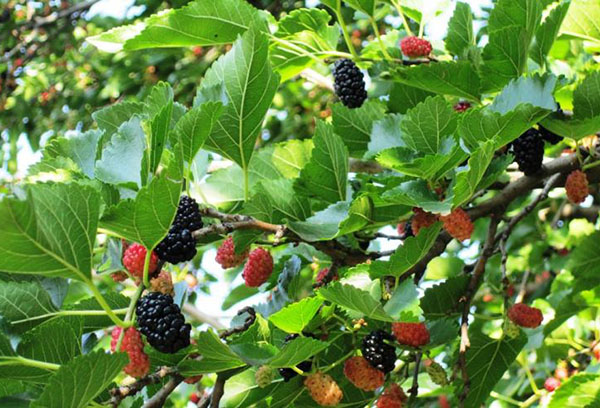

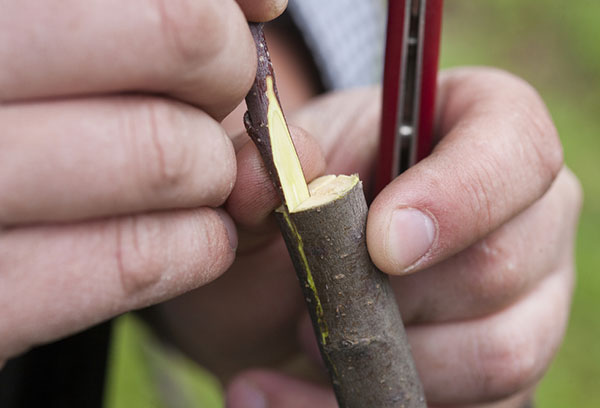
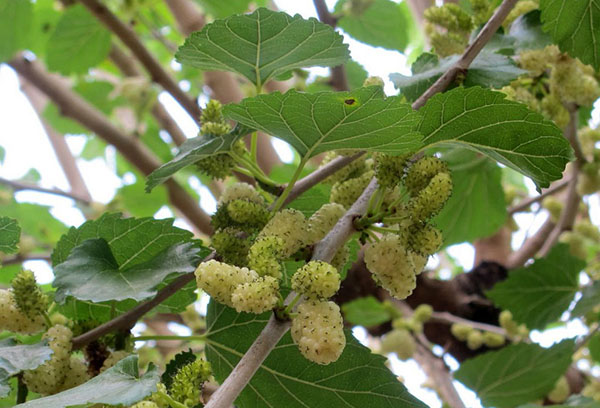
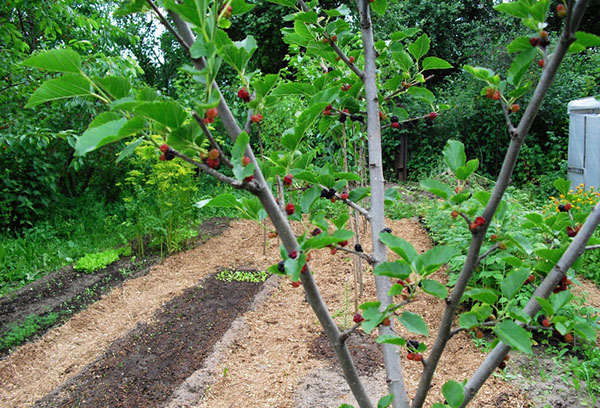
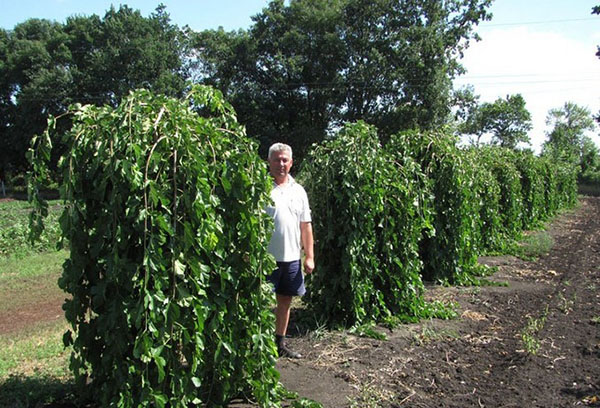
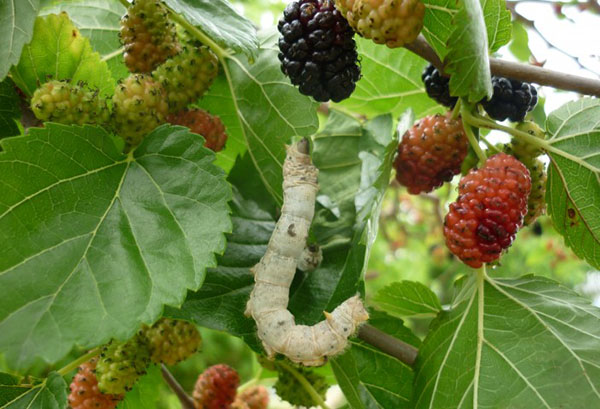
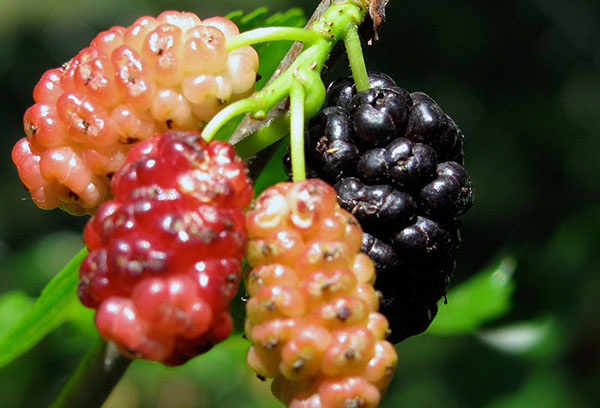
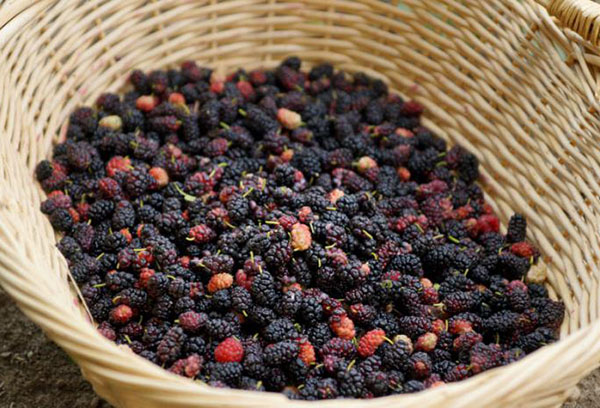
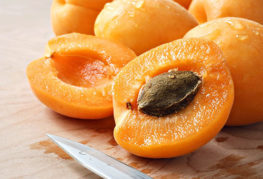

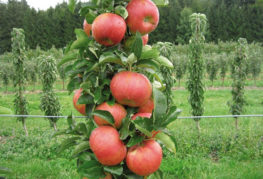

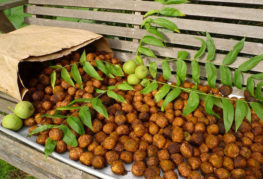
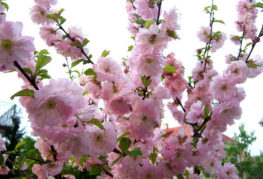
and will be published shortly.